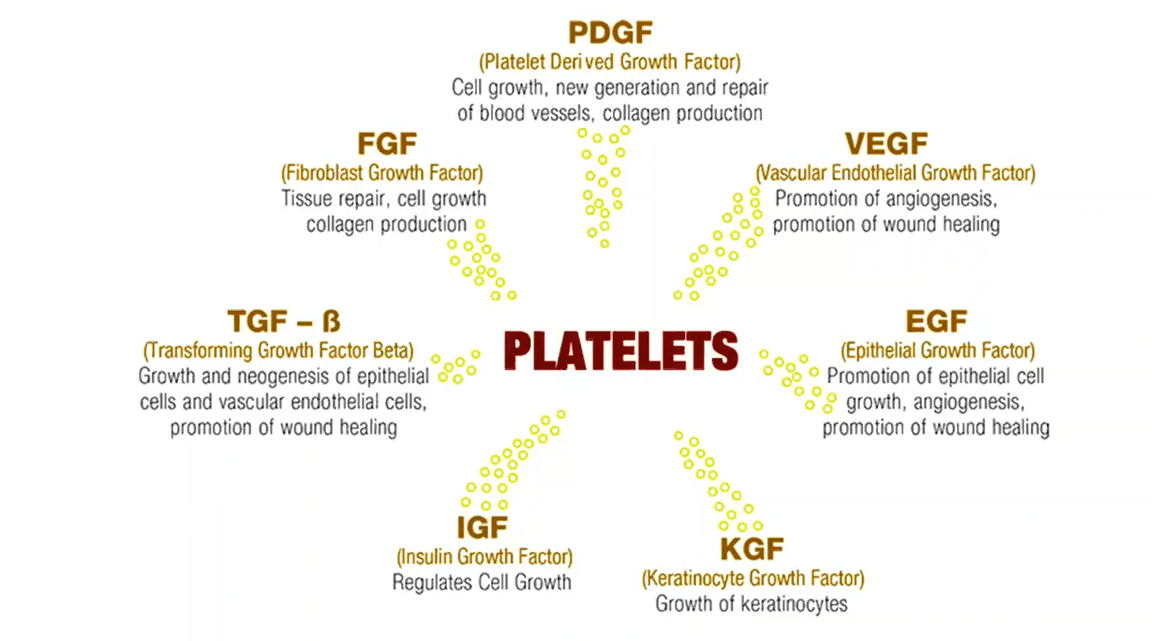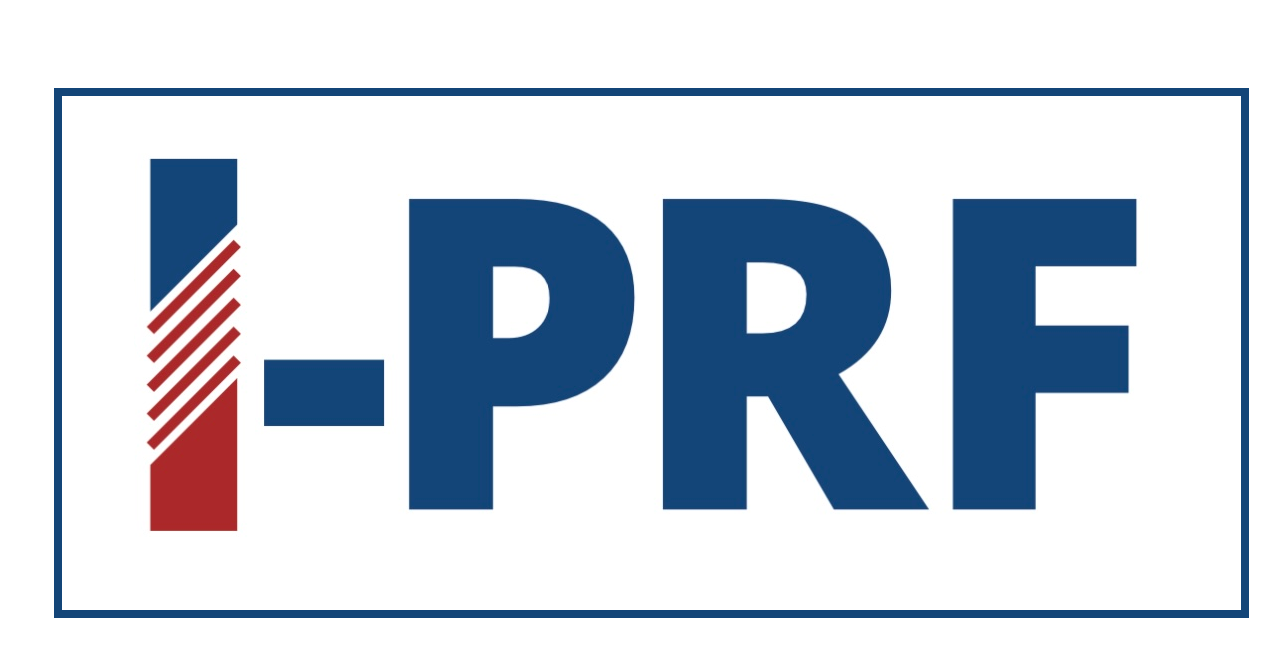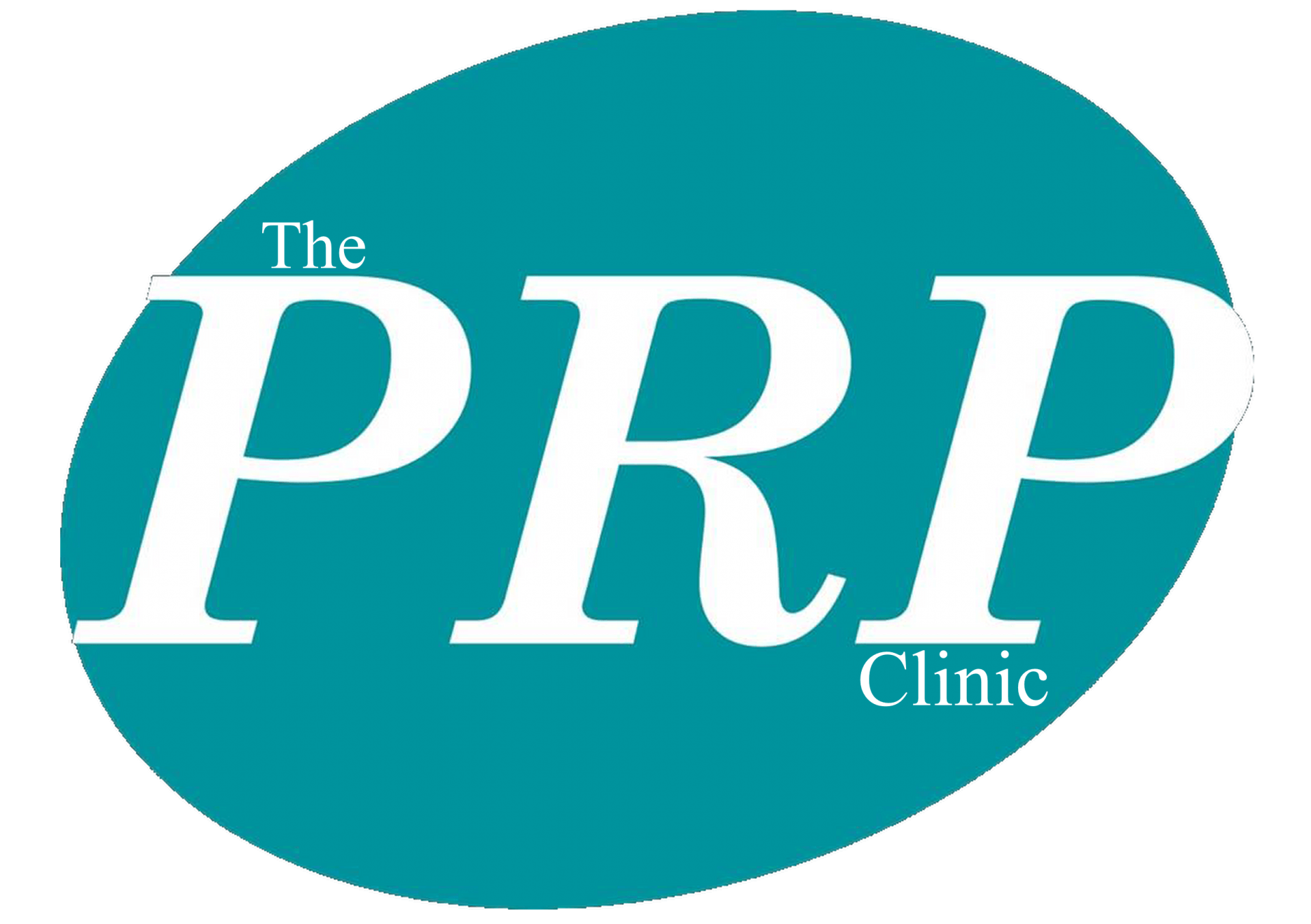Unveiling the Magic of PRP: How PRP Rejuvenates the Skin
James • 30 May 2023
Unveiling the Magic of PRP: How PRP Rejuvenates the Skin

Introduction
In the realm of skincare, innovative treatments constantly emerge to provide individuals with effective solutions for maintaining youthful and radiant skin. Among these advancements, Platelet-Rich Plasma (PRP) therapy has gained significant attention for its remarkable skin rejuvenation properties. This blog post will delve into the intricacies of PRP and explore how this revolutionary procedure breathes new life into the skin, offering a youthful glow and rejuvenated appearance.
Understanding PRP
PRP, an acronym for Platelet-Rich Plasma, is a cutting-edge treatment that taps into the body's natural healing process. The procedure involves the extraction and concentration of platelets and growth factors from the patient's own blood, which are then re-introduced into specific areas of the skin. This concentrated plasma is rich in bioactive substances that promote tissue repair and regeneration.
The PRP Skin Rejuvenation Process
The PRP skin rejuvenation process involves a series of steps that harness the power of platelets to stimulate collagen production, enhance skin texture, and improve overall skin quality.
Step 1: Consultation and Preparation
Before undergoing the PRP therapy, individuals typically consult with a qualified practitioner at a reputable clinic, such as The PRP Clinic in Leeds, serving the Whole UK including Bradford, Manchester, Hull, Newcastle and London. The consultation allows the practitioner to evaluate the patient's skin concerns, discuss desired outcomes, and determine if PRP is the appropriate treatment.
Step 2: Blood Collection and Platelet Separation
During the treatment session, a small sample of the patient's blood is drawn, similar to a routine blood test. The collected blood is then processed in a centrifuge to separate the platelet-rich plasma from the red and white blood cells.
Step 3: PRP Application
Once the PRP is prepared, it is meticulously applied to the target areas of the skin. The practitioner may use various techniques, such as microneedling or injection, to deliver the PRP into the desired layers of the skin. These techniques enhance the absorption and penetration of the PRP, maximizing its rejuvenating effects.
Step 4: Activation and Healing
After the PRP is applied, the platelets release growth factors that stimulate cellular regeneration, collagen production, and tissue repair. This initiates a natural healing response in the skin, gradually improving its texture, tone, and overall appearance.
The Benefits of PRP Skin Rejuvenation
1. Enhanced Collagen Production: PRP therapy stimulates the production of collagen, a vital protein that provides structure and elasticity to the skin. This increased collagen production leads to a reduction in fine lines, wrinkles, and skin laxity, resulting in a more youthful complexion.
2. Improved Skin Texture: By promoting cellular turnover and tissue regeneration, PRP therapy can improve skin texture, making it smoother, softer, and more vibrant.
3. Reduced Scarring and Hyperpigmentation: PRP has been found to diminish the appearance of acne scars, surgical scars, and hyperpigmentation. The growth factors present in PRP help break down scar tissue and promote the growth of healthy skin cells.
4. Natural and Safe: Since PRP utilizes the patient's own blood, there is minimal risk of allergic reactions or adverse side effects. The treatment is considered safe and compatible with most skin types.
5. Minimal Downtime: PRP skin rejuvenation is a non-surgical procedure that typically requires minimal downtime. Individuals can resume their regular activities shortly after treatment, although some temporary redness or swelling may occur.
Conclusion
PRP skin rejuvenation, often referred to as the "vampire facial," is a groundbreaking procedure that harnesses the power of the body's own healing mechanisms to revitalize the skin. By promoting collagen production, enhancing skin texture, and reducing the appearance of scars and hyperpigmentation, PRP therapy offers individuals a natural and effective solution for achieving a more youthful and radiant complexion. If you reside in the UK areas such as Leeds, Bradford, Manchester, Hull, or Newcastle, The PRP Clinic in Leeds
is an ideal destination to explore the benefits of PRP skin rejuvenation and embark on a journey towards revitalized skin.
Supporting evidence

Why Some Clinics Offer Cheap PRP Treatments: Understanding the Differences If you've been exploring PRP (Platelet-Rich Plasma) therapy, you might have noticed that prices can vary significantly from one clinic to another. It's not just about finding a good deal—there are important reasons behind these price differences that you should understand to make an informed decision. Quality of PRP: Concentration, Purity, and Dose The effectiveness of PRP therapy depends heavily on three main factors: platelet concentration, purity, and the dose administered. High-quality PRP treatments require sophisticated equipment, precise protocols, and experienced practitioners to ensure the PRP has a high concentration of platelets, high purity, and the appropriate dose for the specific treatment. Here’s why these factors matter: Platelet Concentration : High concentration of platelets (ideally over 1 million/µL) ensures a rich supply of growth factors necessary for healing and regeneration. Lower concentrations may not be as effective and could even lead to disappointing results. Purity : High-purity PRP contains mostly platelets and very few red and white blood cells. This reduces the risk of inflammation and maximizes the therapeutic benefits of the treatment. Proper Dose : The right volume and concentration ensure that the target area receives enough platelets to stimulate healing. For example, hair restoration treatments usually require about 6 mL of PRP with a high platelet concentration. Cost-Cutting Measures: What to Watch For Clinics that offer significantly cheaper PRP treatments might be cutting costs in ways that compromise the quality and effectiveness of the therapy. Here are some common cost-cutting measures to be aware of: Lower Platelet Concentration : Cheaper treatments might use PRP with a lower platelet concentration, which reduces the number of growth factors and can result in less effective treatment. Inadequate Purity : High-quality PRP should be over 90% pure, meaning it has a high percentage of platelets compared to other blood cells. Some clinics might offer PRP with lower purity, which can lead to less effective and potentially inflammatory treatments. Reduced Dose : Providing a smaller volume of PRP or using a lower concentration can cut costs, but it also means the treatment might not be as effective. For example, using only a few milliliters of PRP when a higher volume is needed can reduce the treatment's success. Inferior Equipment : High-quality PRP requires sophisticated centrifuges and preparation techniques to ensure the best results. Cheaper clinics might use less advanced equipment, leading to inconsistent and lower-quality PRP. Less Experienced Practitioners : Experienced and well-trained practitioners are crucial for administering PRP effectively. Clinics offering cheaper treatments might employ less experienced staff, which can affect the quality and safety of the procedure. Why Choose The PRP Clinic? At The PRP Clinic in the UK, we prioritize quality and effectiveness in all our PRP treatments. Here’s what sets us apart: High Platelet Concentration : We ensure our PRP treatments have a high concentration of platelets, typically over 1 million/µL, to maximize the healing and regenerative effects. High Purity : Our PRP is over 90% pure, containing minimal red and white blood cells to reduce inflammation and improve treatment outcomes. Proper Dose : We provide the right volume and concentration of PRP tailored to each treatment, ensuring you receive the optimal dose for effective results. Advanced Equipment : We use state-of-the-art centrifuges and preparation techniques to produce consistent, high-quality PRP. Experienced Practitioners : Our team is highly trained and experienced in administering PRP therapy, ensuring you receive safe and effective treatment. Making an Informed Decision When considering PRP therapy, it’s important to look beyond the price tag. Ask potential providers about their PRP preparation methods, including the concentration and purity of their PRP, the volume used, and the equipment they use. Here are some questions you might ask: What is the platelet concentration of the PRP you use? How do you ensure the purity of the PRP? What volume of PRP will be used for my treatment? What equipment do you use to prepare the PRP? How experienced are your practitioners with PRP therapy? While cheaper PRP treatments might be tempting, they can come at the cost of quality and effectiveness. High-quality PRP therapy requires proper concentration, purity, and dosage, all of which contribute to better treatment outcomes. Make sure to do your research and choose a clinic like The PRP Clinic that prioritizes quality and has a track record of successful PRP treatments. Your health and the effectiveness of your treatment are worth the investment.
Summary of the Research on Injectable Platelet-Rich Fibrin (i-PRF) and Dermal Papilla Cells (DPCs) for Hair Follicle Regeneration Introduction : Alopecia, characterized by a shorter anagen phase and a prolonged telogen phase in the hair cycle, presents both psychological and social communication challenges. Dermal papilla cells (DPCs), specialized mesenchymal stem cells in hair follicles, have shown potential in treating alopecia due to their hair inductivity. Maintaining the hair-inducing ability of DPCs is crucial for effective alopecia therapy. Platelet Concentrates: PRP, the first generation of platelet concentrates, has shown efficacy in promoting hair regeneration by releasing growth factors such as PDGF, FGF, and VEGF. However, PRP's rapid degradation and need for exogenous activators limit its clinical application. PRF, the second generation, forms a fibrous gel but lacks ease of combination with other biomaterials. Injectable PRF (i-PRF), the third generation, combines the advantages of its predecessors, releasing growth factors stably and continuously, and is easily combined with various biomaterials. Study Objectives: The study aimed to explore the effects of i-PRF on the proliferation, migration, and hair-inducing ability of DPCs, comparing its efficacy with PRP. Methods : Human scalp skin and blood samples were obtained from patients and healthy volunteers. DPCs from mice and humans were isolated and cultured. i-PRF and PRP were prepared, and their effects on DPC proliferation, migration, and gene expression were assessed. The involvement of the TGF-β/Smad signaling pathway in i-PRF's effects was evaluated using a TGF-beta receptor I inhibitor, Galunisertib. Results : i-PRF significantly enhanced DPC viability, proliferation, and migration compared to PRP. Both i-PRF and PRP increased the expression of ALP, Versican, and β-catenin in DPCs, with i-PRF showing more pronounced effects. i-PRF activated the TGF-β/Smad pathway more effectively than PRP, as evidenced by increased expression of TGFBR1, TGFBR2, and higher p-SMAD2/3 to SMAD2/3 ratios. Galunisertib treatment rescued the effects of i-PRF on DPCs, indicating that i-PRF's effects are mediated through the TGF-β/Smad pathway. Conclusion : i-PRF, as a third-generation platelet concentrate, offers superior enhancement of DPC proliferative, migrative, and hair-inducing abilities compared to PRP, primarily through the TGF-β/Smad signaling pathway. This makes i-PRF a promising biocompatible material for hair restoration and tissue regeneration Full article here https://cellmolbiol.org/index.php/CMB/article/view/5462/3220

Hey there! Have you ever found yourself staring at the mirror, feeling a bit down because of your thinning hair? Well, you're not alone. Hair loss, also known as alopecia, affects countless people worldwide, and it's totally normal to feel a bit disheartened by it. But hey, the good news is that there are ways to combat it, and medication happens to be one of the most powerful tools in our arsenal. Now, let's chat about one of the most common types of hair loss: androgenetic alopecia, or AGA for short. AGA is like the villain behind male and female pattern baldness, and it's all about genetics and hormones, particularly this little troublemaker called dihydrotestosterone (DHT). DHT loves to bind to hair follicles and shrink them, leading to thinning and eventual hair loss. Not cool, right? But fear not, because medication is here to save the day! Let's break down some of the options: First up, we've got topical treatments, like minoxidil, also known as Rogaine. Think of minoxidil as your hair's best friend. It works by boosting blood flow to your scalp and giving those hair follicles a little wake-up call, encouraging them to grow new hair. Plus, you can grab it over-the-counter, making it super accessible and easy to use. Next on the list is finasteride, AKA Propecia, the superhero of oral medications. Finasteride swoops in and blocks the enzyme responsible for turning testosterone into DHT, effectively putting a stop to the hair loss process. While it's primarily prescribed for men, it's been known to work wonders for slowing down hair loss and even promoting regrowth. But wait, there's more! Other treatments, like corticosteroids and nutritional supplements, offer additional support in the battle against hair loss. Corticosteroids help calm down inflammation and immune responses, especially for conditions like alopecia areata. And those supplements? They're packed with vitamins, minerals, and amino acids to give your hair the nutrients it needs to thrive. So, why is medication so important in the fight against hair loss? Well, for starters, it's like hitting the pause button on hair loss, giving your follicles a chance to catch their breath and regroup. Plus, it's all about promoting regrowth and helping you get back that full head of hair you've been missing. And the best part? It's non-invasive and convenient, meaning you can tackle hair loss without having to go under the knife. In the end, medication isn't just about treating your hair loss – it's about reclaiming your confidence and feeling like the best version of yourself. So, if you're feeling a bit down about your hair, remember that there are plenty of options out there to help you on your journey to fuller, healthier locks. With the right medication and a positive mindset, you'll be well on your way to rocking that fabulous head of hair in no time! Some of the types of medications and supplements are listed below- Minoxidil (Rogaine) Finasteride (Propecia) Dutasteride Platelet-Rich Plasma (PRP) Therapy Low-Level Laser Therapy (LLLT) Corticosteroids Latanoprost Spironolactone Ketoconazole Tretinoin (Retin-A) Tacrolimus (Protopic) Saw Palmetto Biotin Melatonin Vitamin Supplements Hair loss, also known as alopecia, covers a range of conditions that affect our hair and scalp. Each type has its own causes and treatments, but understanding them can help find the best solutions for hair health. Below is a list of possible treatments for each hair loss condition. Androgenetic Alopecia (Male and Female Pattern Baldness): Minoxidil (Rogaine) Finasteride (Propecia) Dutasteride Platelet-Rich Plasma (PRP) Therapy Low-Level Laser Therapy (LLLT) Corticosteroids (for inflammation associated with follicular miniaturization) Ketoconazole (for scalp health and DHT reduction) Alopecia Areata: Corticosteroids (topical, injectable, or oral) Tacrolimus (Protopic) Platelet-Rich Plasma (PRP) Therapy Low-Level Laser Therapy (LLLT) Telogen Effluvium: Addressing underlying causes (e.g., stress, nutritional deficiencies, hormonal imbalances) Minoxidil (Rogaine) Biotin (supplementation for hair health) Traction Alopecia: Discontinuation of tight hairstyles or hair treatments causing tension on the hair follicles Platelet-Rich Plasma (PRP) Therapy Low-Level Laser Therapy (LLLT) Cicatricial Alopecia (Scarring Alopecia): Corticosteroids (topical, injectable, or oral) Tacrolimus (Protopic) Platelet-Rich Plasma (PRP) Therapy Low-Level Laser Therapy (LLLT) Trichotillomania: Behavioral therapy and counseling to address underlying psychological factors Corticosteroids (topical, injectable, or oral) for inflammation if present Platelet-Rich Plasma (PRP) Therapy Low-Level Laser Therapy (LLLT) Remember, finding the right hair loss treatment is about more than just regaining your hair – it's about reclaiming your confidence and feeling great about yourself. Whether it's through medication, lifestyle changes, or embracing your unique look, there's always hope and support available. You're not alone on this journey, and with patience and perseverance, you can achieve hair health and happiness. Keep shining bright, because you're beautiful just the way you are!

The Secret to Hair Regrowth: How PRP Battles Hair Loss Are you tired of seeing more hair in your brush than on your head? Hair loss can be a real confidence killer, affecting both men and women of all ages. The good news is that there's a cutting-edge solution on the horizon: Platelet-Rich Plasma (PRP) therapy. In this blog post, we're going to uncover the magic behind PRP and how it can help you win the battle against various types of hair loss. The Mystery of Hair Loss Before we dive into PRP, let's take a moment to understand why hair loss happens in the first place. There are different types of hair loss, each with its own set of factors at play: Androgenic Alopecia (AGA) : This is the most common type of hair loss and is often hereditary. It's characterized by a receding hairline or thinning at the crown. Alopecia Areata : This type of hair loss is believed to be an autoimmune disorder where your immune system attacks your hair follicles, causing hair to fall out in patches. Telogen Effluvium : This is a temporary hair loss condition triggered by stress, illness, or hormonal changes. It leads to excessive shedding of hair. Traction Alopecia : This occurs when excessive tension is applied to the hair, often due to tight hairstyles or hair extensions, causing hair loss in specific areas. Scarring Alopecia : This type of hair loss results from inflammation that damages the hair follicles and leaves behind scar tissue. Enter PRP: Your Hair's New Best Friend PRP therapy is a ground breaking approach that harnesses the power of your body's own resources to rejuvenate your hair follicles, regardless of the type of hair loss you're facing. Here's how it works: The Platelet Powerhouse: PRP stands for Platelet-Rich Plasma. Platelets are like tiny superheroes in your blood. When an injury occurs, they rush to the scene to promote healing. In PRP therapy, a small sample of your blood is taken and then spun in a centrifuge to isolate the platelets. The Growth Factor Boost: Once we have a concentrated dose of platelets, we have a potent cocktail of growth factors, cytokines, and proteins. These are the secret ingredients that kickstart hair regrowth. The Hair Follicle Awakening: PRP is injected directly into your scalp, targeting those sleepy hair follicles, regardless of the type of hair loss. When the growth factors arrive on the scene, they act as a wake-up call, telling your hair follicles it's time to get back to work. The Biochemical Magic PRP therapy initiates several essential processes in your hair follicles, regardless of the type of hair loss: Stem Cell Activation: Growth factors in PRP, like Platelet-Derived Growth Factor (PDGF) and Transforming Growth Factor-Beta (TGF-beta), activate dormant stem cells within your hair follicles. This activation sets in motion a series of events that lead to hair regrowth. Prolonged Growth Phase: PRP's growth factors extend the growth phase of your hair cycle, resulting in longer and thicker hair strands, regardless of the type of hair loss. Boosting Blood Flow: Vascular Endothelial Growth Factor (VEGF) is a key player. It promotes the formation of new blood vessels around your hair follicles, ensuring a steady supply of essential nutrients and oxygen for robust hair growth. Calming Inflammation: PRP therapy has anti-inflammatory properties, creating an environment where your hair follicles can thrive, especially beneficial for conditions like alopecia areata, where inflammation contributes to hair loss. What the Evidence Says Clinical studies have consistently shown that PRP therapy is effective in promoting hair regrowth, regardless of the type of hair loss you're dealing with. One study published in the "Journal of Cutaneous and Aesthetic Surgery" (2014) highlighted the value of PRP in managing AGA, with positive results for treated individuals. Beyond PRP: A Holistic Approach While PRP therapy is an incredible tool in the fight against hair loss, it's not the only player on the field. Two other noteworthy options are Minoxidil and Finasteride, and they can be effective against various types of hair loss: Minoxidil : This topical treatment extends the growth phase of your hair cycle and enhances hair follicle size. It's like a supportive friend for PRP, working together to give you the best results. Finasteride : If hormones are the culprit behind your hair loss, Finasteride can help by reducing DHT levels. DHT is a hormone that can shrink hair follicles, leading to hair loss. Combining Finasteride with PRP therapy offers a dual-action approach. Hair loss can be disheartening, but you don't have to accept it as a permanent part of your life, no matter the type of hair loss you're facing. PRP therapy, along with Minoxidil and Finasteride, offers a powerful trio of options to help you regain your hair and your confidence, tailored to your specific needs. Say goodbye to hair loss and hello to a new you, regardless of the type of hair loss you're dealing with! Book Your PRP treatment with The PRP Clinic today

Hair loss can be a distressing experience for both men and women, affecting self-confidence and well-being. Fortunately, advancements in medical technology have led to groundbreaking treatments that offer hope for those struggling with hair loss. The PRP Clinic in Leeds, a renowned specialist centre for PRP, has introduced Platelet-Rich Fibrin (PRF), the next evolution of Platelet-Rich Plasma (PRP) therapy, to provide even more effective and natural results for hair regrowth. Platelet-Rich Fibrin (PRF) is a cutting-edge treatment derived from the patient's own blood, just like traditional PRP therapy. However, PRF goes beyond PRP in terms of its concentration of growth factors and other regenerative elements. The PRF process involves a more advanced centrifugation technique, which results in a fibrin matrix that acts as a scaffold to support the growth factors and prolong their release, making it more potent and longer-lasting. At The PRP Clinic in Leeds , the journey towards natural hair regrowth starts with a comprehensive consultation with our skilled medical professionals. They will assess each patient's unique hair loss condition, medical history, and expectations to create a personalized treatment plan. Step 1: Aspiration and Centrifugation During the PRF procedure, a small sample of the patient's blood is carefully drawn, similar to a routine blood test. The blood is then subjected to a specialized centrifugation process that separates the platelets and fibrin from other blood components Step 2: Collection of PRF The centrifugation process yields Platelet-Rich Fibrin (PRF), a concentrated blend of platelets, growth factors, and fibrin. The PRF is then collected and activated to unleash its regenerative potential. This activation step is crucial, as it ensures that the essential growth factors within the platelets, such as Platelet-Derived Growth Factor (PDGF), Epidermal Growth Factor (EGF), Vascular Endothelial Growth Factor (VEGF), and others, are readily available to stimulate hair regrowth. Step 3: PRF Injection With the PRF ready, the skilled medical professionals at The PRP Clinic will strategically inject it into specific points on the patient's scalp where hair regrowth is desired. The activated PRF starts working immediately, rejuvenating dormant hair follicles and promoting the growth of thicker, healthier hair. PRF vs. PRP: Why PRF is a Game-Changer While PRP has been highly effective in hair regrowth therapy, PRF takes the results to a whole new level. The fibrin matrix in PRF acts as a natural scaffold that slowly releases growth factors, providing a sustained effect over a more extended period. This results in improved hair follicle nourishment, enhanced blood flow, and longer-lasting outcomes. Patients who have experienced PRF hair growth therapy at The PRP Clinic report remarkable improvements and increased satisfaction with their results. Clinical Studies Supporting PRF Hair Growth Therapy: Numerous clinical trials have supported the efficacy of PRF in promoting hair growth and combating hair loss. Studies conducted by leading researchers and institutions have consistently demonstrated positive results with PRF, proving its effectiveness in stimulating hair regrowth. https://www.ncbi.nlm.nih.gov/pmc/articles/PMC5104307/ https://www.ncbi.nlm.nih.gov/pmc/articles/PMC6580805/ https://onlinelibrary.wiley.com/doi/10.1002/9781119406792.ch13 https://ezprf.com/pdf/the-benefits-of-platelet-rich-fibrin.pdf The PRP Clinic in Leeds continues to lead the way in hair restoration treatments with the introduction of Platelet-Rich Fibrin (PRF). With its more advanced and potent regenerative properties, PRF offers patients a superior option for hair regrowth compared to traditional PRP therapy. If you're seeking a 100% natural and effective solution for hair loss, The PRP Clinic's PRF hair growth therapy could be the key to unlocking a fuller, healthier head of hair and restoring your confidence. Book a consultation today and embark on your journey to reclaiming your crowning glory.



